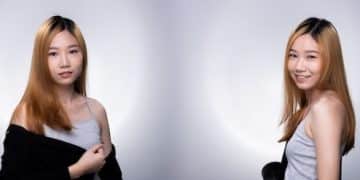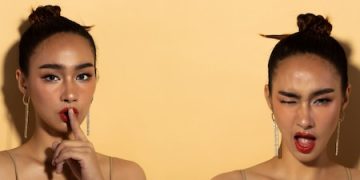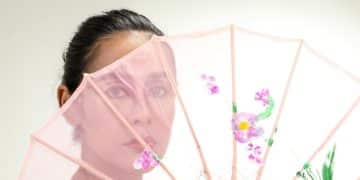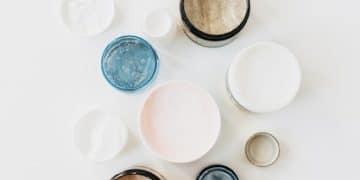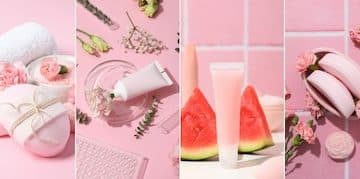Korean Beauty in 2025: US Trends Adapting to K-Beauty Standards
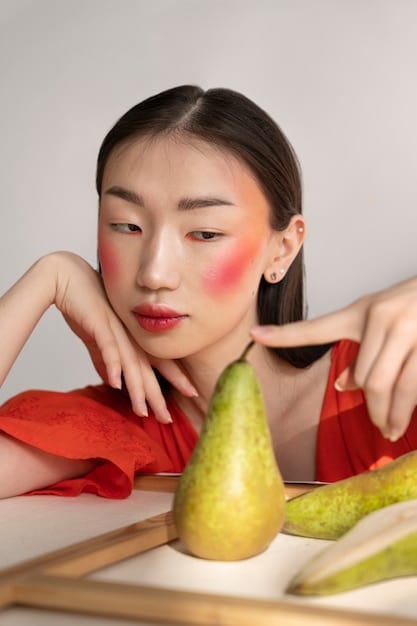
Understanding Korean Beauty Standards in 2025: US beauty trends are increasingly influenced by the innovative and holistic approach of K-beauty, leading to a fusion that emphasizes natural ingredients, gentle skincare practices, and a focus on achieving healthy, glowing skin.
The allure of Korean beauty continues to captivate the world, and by 2025, its influence on US beauty trends will be even more profound. **Understanding Korean Beauty Standards in 2025: How US Trends Are Adapting** reveals a fascinating blend of cultures, where the pursuit of radiant, healthy skin takes center stage.
The Enduring Appeal of Korean Beauty Standards
Korean beauty standards have long been admired for their emphasis on healthy, glowing skin achieved through meticulous skincare routines and innovative products. This approach is gradually reshaping beauty ideals in the US.
But what exactly makes K-beauty so appealing, and how will these standards evolve in the coming years?
The Focus on Skincare
Unlike the US, where makeup often takes precedence, K-beauty prioritizes skincare. The goal isn’t just to cover imperfections, but to achieve naturally flawless skin that requires minimal makeup.
The Importance of Prevention
K-beauty emphasizes prevention over correction. This means starting skincare routines early and focusing on protecting the skin from damage before issues arise.
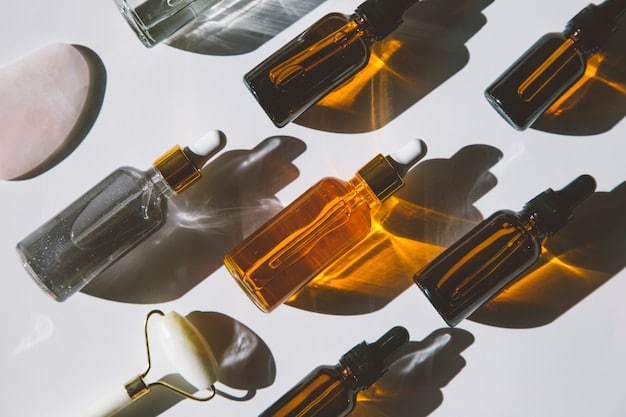
- Gentle exfoliation is favoured over harsh scrubs
- Sun protection is a non-negotiable daily ritual
- Hydration is key to maintaining plump and healthy skin
Ultimately, the enduring appeal of Korean beauty standards lies in its holistic approach. It’s not just about achieving a certain look, but about cultivating a lifestyle that promotes overall health and well-being.
Key Characteristics of K-Beauty
To truly understand the influence of K-beauty on US trends, it’s essential to examine its core characteristics. These characteristics differentiate K-beauty from traditional Western beauty practices.
Here’s a breakdown of the main elements.
Emphasis on Natural Ingredients
K-beauty frequently incorporates natural ingredients like green tea, rice water, snail mucin, and ginseng. These ingredients are valued for their soothing, hydrating, and anti-inflammatory properties.
Multi-Step Skincare Routines
The famous K-beauty routine typically involves 10 or more steps, including cleansing, toning, essence, serum, moisturizer, and sunscreen. This meticulous approach ensures that the skin receives comprehensive care.
Innovative Formulations and Technologies
K-beauty is known for its innovative formulations and technologies, such as sheet masks, cushion compacts, and BB creams. These products often combine skincare and makeup benefits.
- Double cleansing uses an oil cleanser to remove makeup, followed by a water-based cleanser to remove residue.
- Essences are lightweight, hydrating fluids that prep the skin for subsequent products.
- Sheet masks deliver concentrated doses of nutrients and hydration.
The characteristics of K-beauty highlight a focus on gentle, effective skincare that prioritizes long-term skin health over quick fixes. In 2025, these principles will likely be even more integrated into US beauty routines.
How US Beauty Trends Are Adapting
The US beauty market is increasingly adapting to K-beauty standards, with many brands incorporating Korean ingredients, techniques, and philosophies into their products and marketing.
Here’s how these changes manifest.
Increased Focus on Skincare
US consumers are becoming more interested in skincare as opposed to simply covering face imperfections with makeup. This shift is driving demand for products that promote healthy skin from within.
Adoption of Natural Ingredients
Many US brands are now incorporating natural ingredients, such as green tea and hyaluronic acid, into their formulations, echoing the K-beauty emphasis on gentle and effective ingredients.
Simplification of Multi-Step Routines
While the 10-step K-beauty routine may seem daunting to some, US consumers are adapting it by incorporating key elements like double cleansing, serums, and sunscreen into their routines.
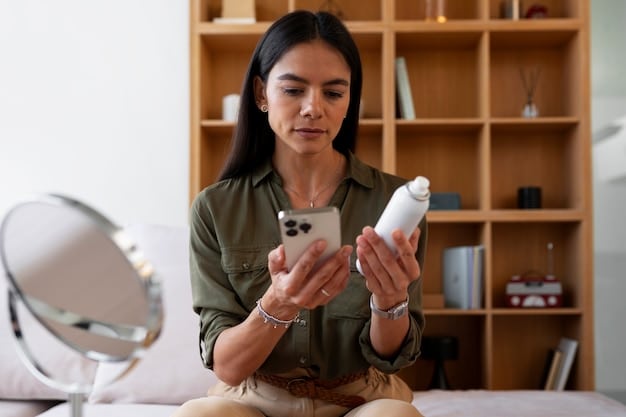
- US brands are launching hybrid products with makeup and skincare ingredients.
- “Skinimalism” is rising, focusing on fewer products with multiple benefits.
- Personalized skincare is gaining popularity, leveraging technology for customized routines.
The ways in which US beauty trends are adapting demonstrate a growing appreciation for the K-beauty philosophy of prioritizing healthy, radiant skin through gentle and effective skincare practices.
Ingredients Taking Center Stage
Certain ingredients are becoming increasingly prominent in both Korean and American beauty products, driving the trend towards more natural and effective skincare.
Here’s a look at some key ingredients.
Hyaluronic Acid
Known for its exceptional hydrating properties, hyaluronic acid helps to plump the skin and reduce the appearance of fine lines and wrinkles.
Green Tea
Rich in antioxidants, green tea helps to protect the skin from environmental damage and reduce inflammation.
Centella Asiatica (Cica)
Cica has soothing and healing properties, making it ideal for sensitive or irritated skin.
Niacinamide
Niacinamide, or vitamin B3, helps to improve skin tone, reduce pore size, and strengthen skin’s barrier.
The increased use of these ingredients reflects a broader shift towards more gentle and effective skincare. As consumers become more informed, they are seeking out products with these proven ingredients.
The Influence of K-Dramas and Celebrities
K-dramas and K-pop idols play a significant role in popularizing Korean beauty standards and influencing trends, capturing the imagination of a global audience.
How do these cultural exports impact the beauty landscape?
Showcasing Flawless Skin
K-dramas often feature actors and actresses with flawless, glowing skin thanks to their skincare routines and beauty product use. This creates a desire among viewers to achieve a similar complexion.
Promoting Specific Products
K-dramas and K-pop music videos often showcase specific beauty products, leading to increased demand for those items. Sponsorships and endorsements further amplify this effect.
Setting Beauty Ideals
K-drama and K-pop celebrities establish beauty ideals that emphasize youthfulness, radiance, and natural beauty. This influences beauty standards not only in Korea but also globally.
- Celebrities share their routines on social media, building excitement.
- Makeup and skincare tutorials help fans to replicate looks.
- Influencer collaborations promote K-beauty products and philosophies.
As K-dramas and K-pop continue to gain popularity, their influence on beauty standards will likely grow even stronger. This will further fuel the adoption of K-beauty principles and products in the US and beyond.
Challenges and Criticisms
While K-beauty has many benefits, it is not without its challenges and criticisms. It’s important to acknowledge these issues to provide a balanced perspective.
Here are some of the considerations.
Cultural Appropriation
Some argue that the adoption of K-beauty practices by non-Koreans is a form of cultural appropriation. It’s important to approach K-beauty with respect for its cultural origins.
Unrealistic Expectations
The focus on flawless skin can create unrealistic expectations and contribute to body image issues and low self-esteem. It’s important to remember that beauty standards are subjective and that everyone’s skin is different.
Potential for Harmful Ingredients
Some K-beauty products may contain ingredients that are harmful to certain skin types or health conditions. It’s very important to thoroughly research products and consult with a dermatologist if you have concerns.
- Ethical concerns surrounding ingredient sourcing and animal testing are key considerations.
- The environmental impact of packaging waste from multi-step routines needs addressing.
- The emphasis on external appearances can lead to neglecting overall well-being.
By acknowledging these challenges and criticisms, we can engage in productive conversations about how to promote healthy and inclusive beauty standards that prioritize individual well-being and cultural respect.
| Key Concept | Brief Description |
|---|---|
| 🌿 Natural Ingredients | K-beauty emphasizes ingredients like green tea, rice water, and snail mucin. |
| 🧴 Multi-Step Routines | Extensive skincare routines focus on cleansing, toning, and hydration. |
| ✨ Radiant Skin | Aim is to achieve a naturally flawless complexion, minimizing makeup use. |
| 🇰🇷 K-Drama Influence | K-dramas and celebrities promote beauty ideals globally. |
Frequently Asked Questions
▼
Korean beauty standards in 2025 prioritize a natural, healthy glow, achieved through meticulous skincare routines, and favor minimal makeup to enhance rather than conceal natural beauty.
▼
US beauty trends are adapting by embracing skincare, natural ingredients, and preventative measures inspired by K-beauty. This includes simplified versions of multi-step routines and a focus on skin health.
▼
Ingredients such as hyaluronic acid, green tea, centella asiatica (cica), and niacinamide are gaining popularity in US beauty products due to their hydrating, soothing, and antioxidant properties.
▼
K-dramas showcase actors with flawless skin, promote specific products, and set beauty ideals, influencing global trends by generating aspiration and driving demand for K-beauty practices.
▼
Criticisms include cultural appropriation, unrealistic beauty expectations, potential for harmful ingredients, and ethical concerns regarding sourcing and environmental impact, encouraging a focus on healthy practices.
Conclusion
As we look to 2025, the fusion of Korean and American beauty trends promises a future where healthy, radiant skin is the ultimate goal. By understanding the key principles of K-beauty and how they are being adapted in the US, consumers can make informed choices and embrace a holistic approach to beauty that promotes overall well-being.
